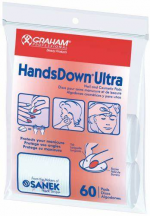Hello, myname is edwin
I have a question regarding licron crystal. I am from holland, and last year i found a can of licron crystal on ebay from a seller from germany.
I bought it, and used it two times. One time one a audiostatic esh 50 wich i have restored. And it works perfectly.
But i have alo used it on a es200 but i think i did not do a good job in masking off all the parts that were not supposed to get a layer of licron.
The result was a low output probably from a leakage.

So i want to do it all over again, but first i think it is a good idea to clean the stators.
My question is: what will be a good cleaning agent to get rid of the licron crystal on the stators?
Greetings edwin
I have a question regarding licron crystal. I am from holland, and last year i found a can of licron crystal on ebay from a seller from germany.
I bought it, and used it two times. One time one a audiostatic esh 50 wich i have restored. And it works perfectly.
But i have alo used it on a es200 but i think i did not do a good job in masking off all the parts that were not supposed to get a layer of licron.
The result was a low output probably from a leakage.
So i want to do it all over again, but first i think it is a good idea to clean the stators.
My question is: what will be a good cleaning agent to get rid of the licron crystal on the stators?
Greetings edwin
Bad news. Either mechanical means like sandpaper/steel wool brush of urethane paint chemical stripper. The latter may contain Xylene or Dichloroethane or other nice carcinogenic chemicals. Some report alcohol/thinner mixture as a success but the latter usually contains some of the above.
Cheers
P.S. Polyurethane definitely does not like alcohols like methanol, ethanol propanol. Use those to soften the paint and scrub it. It's all more or less safe for pet film but I would of checked it before applying to diaphragm and/or stator
Cheers
P.S. Polyurethane definitely does not like alcohols like methanol, ethanol propanol. Use those to soften the paint and scrub it. It's all more or less safe for pet film but I would of checked it before applying to diaphragm and/or stator
Last edited:
Licron is pretty resistant to most chemicals ( Licron chemical compatibility sheet posted here: ESL Diaphragm coating)
I have had good look removing Licron with acetone...the one chemical mentioned that will soften Licron. I use pads made for removing nail polish that wick the Licron up into the pad rather than smearing it around on the diaphragm. The particular ones I use also have a nice plastic film barrier and handle built in to each pad so you don't get acetone on your hands.
I have had good look removing Licron with acetone...the one chemical mentioned that will soften Licron. I use pads made for removing nail polish that wick the Licron up into the pad rather than smearing it around on the diaphragm. The particular ones I use also have a nice plastic film barrier and handle built in to each pad so you don't get acetone on your hands.
Attachments
If you do something more involved with acetone, keep in mind that the vapor is heavier than air. It can hang around in garbage cans, etc. Had an "interesting" garbage can fire at work once related to this. It gets exciting fast when someone jokingly lights a bit of garbage on fire, not realizing there are a lot of flammable vapors there. Anyway . . . .
Licron is pretty resistant to most chemicals ( Licron chemical compatibility sheet posted here: ESL Diaphragm coating)
I have had good look removing Licron with acetone...the one chemical mentioned that will soften Licron. I use pads made for removing nail polish that wick the Licron up into the pad rather than smearing it around on the diaphragm. The particular ones I use also have a nice plastic film barrier and handle built in to each pad so you don't get acetone on your hands.
That's very peculiar. I did successfully removed polyurethane varnish using alcohols, particularly propanol, mainly from the wooden parts.
On the other hand acrylic based staticide is readily dissolved by acetone and or butyl-acetate.
It's fair to say that most so-called urethane lacquers are indeed acrylic with some urethane added.
N-propyl acetate partially dissolves licron per table posted thus making nail polish remover the best choice.
Last edited:
I must admit I had concentrated on the "1-minute" column of the table when searching for possible Licron removers. Do you have any experience with Dowanol DPM? The table says that it completely dissolves Licron after 10 minutes. If this is the same chemical that is used for reed diffusers, seems likely it is not very toxic...possibly a good alternative to Acetone....N-propyl acetate partially dissolves licron per table posted...
Dowanol DPM
- Status
- This old topic is closed. If you want to reopen this topic, contact a moderator using the "Report Post" button.
- Home
- Loudspeakers
- Planars & Exotics
- Cleaning off licron crystal from stators
